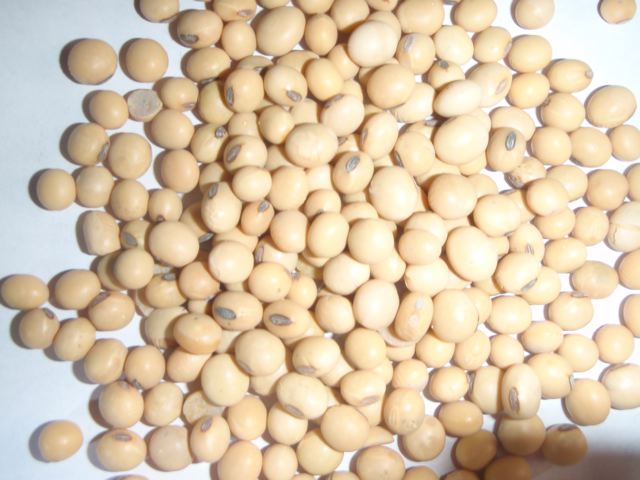Weeds
Grasses
Sedges
Broadleaf
Diseases
Fungal
Bacterial
Viral
Agro-ecology
Intercropping soybean with corn attracts parasitic wasps that
control corn earworm and at the same time serves as weed cover. Soybean when intercrop with sicklepod (
Cassia obtusifolia) lessens the infestation of velvet bean caterpillar and green stink bug. Soybean when intercrop with rye lessens the infestation of corn seedling maggot (OIKOS, 2003). Planting green beans as trap crops in between rows protects soybean from Mexican bean beetles (Ellis; Bradley, 1996: p. 440). Soybeans should not be grown on the same site for more than two years to prevent a build-up of soil-borne diseases. The plant grows best in a rotation after corn or small grains but should not follow edible beans, rape, or sunflowers because white mold disease can be carried over (Upfold; Olechowski, 1994).
Incorporate organic manure before primary tillage. But when organic materials are scarce, apply potash and phosphate as supplements split into two or more applications. The rates required depend on the ecological conditions and yield potential. However, fertilizer
recommendations based on soil analyses offer the very best chance of getting the right amount of fertilizer without over or under fertilizing. Ask for assistance from local agriculturist office for soil sampling and soil analysis procedures.
Soybeans can obtain up to half of their nitrogen needs from the air when nitrogen-fixing-rhizobia (bacteria) are present in the soil. Nitrogen fixation is a result of the symbiotic relationship of rhizobia and the plants. Seed inoculation is needed to ensure nitrogen fixation in the soil. Inoculation in the field may be necessary when adequate nodule formation is not expected. A well-nodulated plant should have around 5-7 nodules on the primary root. When plants have fewer nodules, monitor the field carefully to determine if the nodule numbers increase. If nitrogen deficiency symptoms develop, apply 25-30 kg/ha (of nitrogen) to supplement soil nitrogen reserves. Apply nitrogen at or soon after flowering. Nitrogen deficiency results in reduced
chlorophyll development and a pale-green leaf color (IFA, 2000). Do not add nitrogen to well-nodulated soybeans. It is just wastes of time and money. Nitrogen added during planting delays nodulation and when applied during the vegetative stage results poor nodule formation in proportion to the rates applied.
External links
References
- CABI. (2000): Crop protection compendium. Global module, 2nd edition. CABI Publishing, Wallingford, UK.
- CABI. (2004): Crop protection compendium. 2004 Edition. CAB International Publishing. Wallingford, UK.
- IFA. (2000): Soybean (Glycine max) http://www.fertilizer.org/ifa/publicat/html/pubman/soybean.htm
- PCARRD. (1986): The Philippine Recommends for Soybean. Technical Bulletin Series No. 14A. PCARRD. National Science and Technology Authority. Manila, Philippines.
- Upfold. R.; Olechowski, H. (1994): Soybean production. Ontario Ministry of Agriculture and Food, Publication 173. Queen’s Printer for Ontario, Toronto, ON.
- Youdeowei, A. (2002): Integrated pest management practices for the production of cereals and pulses. Integrated Pest Management Extension Guide 2; Series editors: A. Cudjoe and M. Braun; Ministry of Food and Agriculture, GTZ and CTA.

